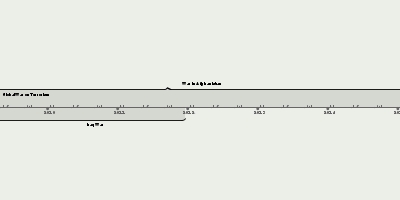1 sept. 1985 - Discovery of the RMS Titanic
Description:
D. Michael Harris and Jack Grimm failed to find the Titanic, but their expeditions did succeed in producing fairly detailed mapping of the area in which the ship sank. It was clear that the position given in the Titanic's distress signals was inaccurate, which was a major expedition difficulty because it increased the search area's already-expansive size. Despite the failure of his 1977 expedition, Robert Ballard, retired US Navy officer and professor of oceanography at the University of Rhode Island, had not given up hope and devised new technologies and a new search strategy to tackle the problem. The new technology was a system called Argo / Jason. This consisted of a remotely controlled deep-sea vehicle called Argo, equipped with sonar and cameras and towed behind a ship, with a robot called Jason tethered to it that could roam the sea floor, take close-up images and gather specimens. The images from the system would be transmitted back to a control room on the towing vessel where they could be assessed immediately. Although it was designed for scientific purposes, it also had important military applications and the United States Navy agreed to sponsor the system's development, on condition that it was to be used to carry out a number of programmes – many still classified – for the Navy.The Navy commissioned Ballard and his team to carry out a month-long expedition every year for four years, to keep Argo / Jason in good working condition. It agreed to Ballard's proposal to use some of the time to search for the Titanic once the Navy's objectives had been met; the search would provide an ideal opportunity to test Argo / Jason. In 1984 the Navy sent Ballard and Argo to map the wrecks of the sunken nuclear submarines USS Thresher and USS Scorpion, lost in the North Atlantic at depths of up to 9,800 ft (3,000 m). The expedition found the submarines and made an important discovery about how shipwrecks behave as they sink. As Thresher and Scorpion sank, debris spilled out from them across a wide area of the seabed and was sorted by the currents, so that light debris drifted furthest away from the site of the sinking. This debris field was far larger than the wrecks themselves. By following the comet-like trail of debris, the main pieces of wreckage could be found.
A second expedition to map the wreck of Scorpion was mounted in 1985. Only twelve days' search time would be left at the end of the expedition to look for the Titanic. As Harris/Grimm's unsuccessful efforts had taken more than forty days, Ballard decided that extra help would be needed. He approached the French national oceanographic agency, IFREMER, with which Woods Hole had previously collaborated. The agency had recently developed a high-resolution side-scan sonar called SAR and agreed to send a research vessel, Le Suroît, to survey the sea bed in the area where the Titanic was believed to lie. The idea was for the French to use the sonar to find likely targets, and then for the Americans to use Argo to check out the targets and hopefully confirm whether they were in fact the wreck. The French team spent five weeks, from July 5th to August 12th, 1985, "mowing the lawn" – sailing back and forth across the 150-square-nautical-mile (510-square-kilometre) target area to scan the sea bed in a series of stripes – but they found nothing. However, it turned out later that they had passed within a few hundred yards of the Titanic in their first run.
Ballard realised that looking for the wreck itself using sonar was unlikely to be successful, so he adopted a different tactic: drawing on the knowledge gained during the searches for the submarines Thresher and Scorpion, he instead searched for the debris field using Argo's cameras rather than sonar. While sonar cannot distinguish human-made debris on the sea bed from natural objects, cameras can. The debris field was also a far bigger target, stretching one nautical mile (2 km) or longer, whereas the Titanic itself was only 90 feet (27 m) wide. The search required round-the-clock towing of Argo back and forth above the sea bed, with shifts of watchers aboard the research vessel Knorr looking at the camera pictures for any sign of debris. After a week's fruitless searching, at 12:48 am on Sunday September 1st, 1985, pieces of debris began to appear on Knorr's screens. One of them was identified as a boiler, identical to those shown in pictures from 1911. The following day, the main part of the wreck was found and Argo sent back the first pictures of the Titanic since her sinking 73 years before. The discovery made headlines around the world.
Ajouté au bande de temps:
Date:
1 sept. 1985
Maintenaint
~ Il y a 40 ans
